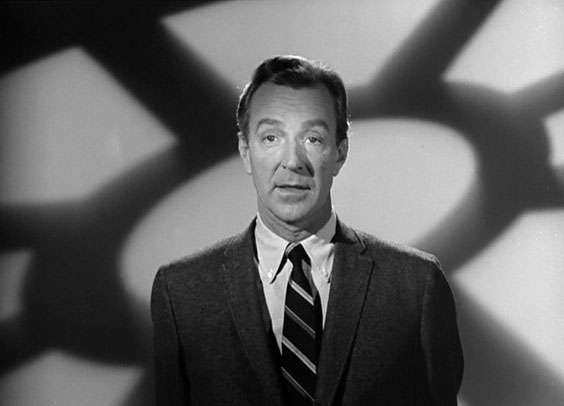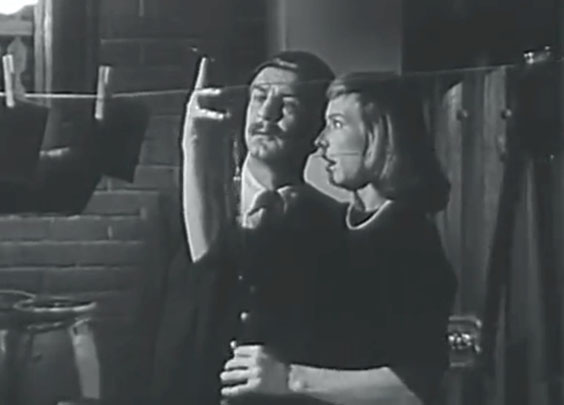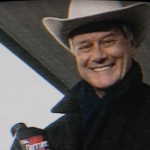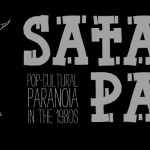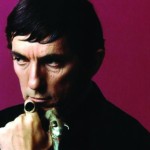Review: “ONE STEP BEYOND” 6-DVD Set
DVD Review: One Step Beyond
Film Chest Media Group, 2015
70 episodes on 6 DVDs
BUY on Amazon HERE
“What you’re about to see is a matter of human record. Explain it, we cannot. Disprove it, we cannot. We simply invite you to explore with us the amazing world of the unknown … to take that One Step Beyond.”
Alcoa Presents (One Step Beyond) was one of TV’s earliest anthology programs devoted to the paranormal. Airing for three seasons on ABC from 1959 to 1961, the show was hosted by “Your guide to the supernatural,” actor John Newland, who also directed all of the show’s 96 episodes, later going on to direct episodes of The Twilight Zone (1959-64) and some of the best episodes of the Boris Karloff-hosted Thriller (1960-62). The show was the brainchild of Newland and producers Merwin Gerard and Collier Young, who also provided material for much of the show’s stories of the paranormal and supernatural. Unlike its contemporaries and many of its predecessors, such as Lights Out! (1946-52) and Suspense (1949-54), One Step Beyond was consistently a horror series, one of the first series on television devoted exclusively to terrifying audiences at home.
Eclipsed by the Twilight Zone in popular culture, but airing a full season before Rod Serling’s juggernaut (and receiving consistently higher ratings), One Step Beyond’s pseudo-documentary format has, in fact, more to do with later series like the Leonard Nimoy-hosted In Search of … (1976-82), Ripley’s Believe it or Not! (1982-86), Unsolved Mysteries (1987-present), Sightings (1992-97), and A Haunting (2005-present), than with The Twilight Zone’s fantastic allegories. With One Step Beyond, television audiences could speculate on stories of precognition, E.S.P., hauntings, strange coincidences, and the irrational.
One Step Beyond made the most of its paranormal fodder. According to co-producer and writer, Gerard, “there are only about 15 basic psychic phenomenon stories” (from an interview cited by John Kenneth Muir in An Analytical Guide to Television’s One Step Beyond, 2001: canada cialis 25). John Newland’s confrontational call to his audience to “believe it, or not,” always spoken with an ironic smile on his face, was just one of the ways the show perhaps betrayed its devilish cleverness, or at least its willingness to bristle a TV order levitra now audience seated all-too-comfortably in its cozy living rooms.
Of interest to fans of horror’s relatively recent caché of found-footage and mockumentary horror films, One Step Beyond often shifts out of its usual docudrama mode to feature pseudo-documentary, proto-mockumentary horror and paranormal reality TV elements. Newland appears in several episodes not just as host, but also to “interview” the actual subjects involved in the original events that inspired the story. And in at least one other episode, “The Dead Part of the House” (S01, E09), Newland interviews the actors portraying the characters, as if they were the subjects of actual events. The series’ inventive ontological shiftiness is a major part of both its unnerving nature, and its charm. The only series that anticipated One Step Beyond’s hybrid collapse of the uncanny-real and the fantastic was the short-lived, Karloff-hosted UK series, The Veil (1958), which lasted only a season.
The show’s availability since it last appeared in syndication in the 1980s and on the Syfy network in the 1990s, has been sketchy http://www.spectacularoptical.ca/2021/02/levitra-without-prescription-ottawa/ at best. Because most of the episodes are in the public domain, a good number of them can be found in rather murky prints with muffled, crackling sound, on sites like Archive.org and YouTube, and in boxed sets issued by Alpha and Delta (both 2004). Significantly, there seems to have been an attempt at issuing each season individually by CBS-Paramount, whom one would assume owns the rights to those copyrighted episodes that have gone so long unseen. The visual and aural quality of Paramount’s “Official First Season” set of three discs (issued in 2009) is stunning compared to any other available incarnation of the show, but seasons two and three of the series have not yet followed.
This article appears on the occasion of Film Chest Media Group’s 2015 release of a new “collector’s” set of One Step Beyond. This slim new 6-DVD collection may be the most comprehensive compendium of the show to date, containing 70 of the show’s original 96 episodes, remastered in high-definition. Visually, Film Chest Media’s set stands as a good bet for the viewer who wants to see as much of the show as can be seen currently, in the best quality possible from the available elements. That said, the quality of those elements varies dramatically from crisp and clean prints with clear audio, to muddied, artifact-strewn prints that bear the usual visual and aural wear and tear of frequently circulated source materials. In short, this set offers a moderate visual and aural improvement over all but the Paramount “Official First Season” set.
Film Chest Media Group’s collector’s edition of One Step Beyond resists claiming to be a compendium or showcase for the series, instead opting to provide an affordable and understated addition to one’s DVD library. It is “more complete and comprehensive” than prior sets, as the packaging tells us. Besides a useful insert listing episodes and tag-line synopses, there are no extra features or contextualizing material, leaving room for future sets to take up this call. Unfortunately, this also means the One Step Beyond completist must continue to wait for a significant number of long-unavailable episodes (26 in total), many of them from the show’s final season, including perhaps the show’s most infamous (and popular) episode, “The Sacred Mushroom” (S03, E18; airdate 24 January, 1961), in which Newland eats magic mushrooms and reports his experience to a documentary film crew in Mexico.

John Newland, “Your guide to the supernatural” on One Step Beyond, also directed and hosted every episode of the show. Here, we find him eating magic mushrooms in the episode, “The Sacred Mushroom”!
One Step Beyond was made during TV’s sponsor identification years, where the commercial sponsor’s logo and words were as much a part of viewing the show as the show’s content. For One Step Beyond, the sponsor was Alcoa aluminum, and Alcoa Presents did not just precede the title of the show, but was, in fact, the title of the show. The show’s cult status today is due to a later revival in syndication that dropped the “Alcoa Presents,” changing the title to reflect the otherworldly implications of Newland’s opening monologues. Again, due to the available materials, only a couple of the episodes in this new collection feature the show’s original opening “Alcoa Presents” titles, which is regrettable in that much of the experience of watching the show in its original form remains lost to time.
One Step Beyond completists will likely want to wait for all three of the CBS-Paramount season-by-season sets to be available, assuming (as this reviewer hopes) that seasons 2 and 3 in this series would include all of the episodes missing in both Film Chest Media Group’s collector’s edition and prior editions. But to date, Film Chest Media Group’s collector’s edition of One Step Beyond is more than just a cash-in on a largely public domain series. It is currently the most complete and viewable set of the series, and the price ($10.99 on Amazon.com and $22.26 on Amazon.ca) may convince fans of the show to tide themselves over with such an affordable, accessible option.

 October 29, 2015
October 29, 2015  No Comments
No Comments
